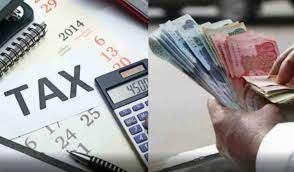Excise tax, a specific form of taxation levied on particular Akcyza za samochód z usa goods and services, plays a significant role in the fiscal policy of many countries. Unlike general sales taxes that apply broadly to a wide array of consumer goods, excise taxes target specific products. These taxes are often included in the price of the goods and are typically paid by the manufacturer or retailer, who then passes the cost onto the consumer.
Historical Context and Purpose
The concept of excise tax dates back to ancient times, with early implementations in Greece and Rome. Historically, governments used excise taxes as a means to raise revenue without directly imposing high income or property taxes. Over the centuries, the purpose of excise taxes has evolved. Today, they serve not only as a revenue source but also as a tool for regulating consumption and promoting public health.
For instance, taxes on tobacco and alcohol, often referred to as “sin taxes,” aim to reduce consumption due to their associated health risks. Similarly, environmental taxes on products like gasoline or coal are intended to reduce pollution and encourage the use of cleaner energy sources.
Types of Excise Taxes
Excise taxes can be categorized into several types based on the nature of the goods or services taxed. Here are the most common types:
- Sin Taxes: These are imposed on products that are considered harmful to society, such as cigarettes, alcohol, and gambling. The goal is dual: to generate revenue and to discourage unhealthy behavior.
- Environmental Taxes: These taxes target goods that harm the environment, like fossil fuels, plastic bags, and chemicals. The intention is to promote sustainable practices and reduce environmental damage.
- Luxury Taxes: Levied on high-end goods, luxury taxes aim to ensure that the wealthy contribute a fair share to government revenues. Items like expensive cars, yachts, and jewelry often fall under this category.
- Health-related Taxes: Products like sugary drinks and high-fat foods are taxed to mitigate public health issues such as obesity and diabetes. These taxes are part of broader health policies aimed at reducing the consumption of unhealthy foods.
Implementation and Collection
Excise taxes are typically imposed at the production or importation stage rather than at the point of sale. This method simplifies the collection process, as fewer entities need to be monitored compared to taxing individual consumers directly. For example, a tobacco manufacturer will pay the excise tax when producing cigarettes, which is then factored into the retail price paid by consumers.
The rates and methods of calculating excise taxes vary widely across countries and products. They can be a fixed amount per unit (specific tax) or a percentage of the product’s value (ad valorem tax). For instance, a specific tax might impose $1 per pack of cigarettes, while an ad valorem tax might charge 10% of the retail price.
Economic and Social Impacts
The impact of excise taxes on society and the economy can be significant. By increasing the price of taxed goods, these taxes can effectively reduce demand, achieving public policy goals such as improved public health or reduced environmental impact. However, excise taxes can also be regressive, disproportionately affecting lower-income individuals who spend a larger share of their income on these goods.
Moreover, excise taxes can influence market behavior. Higher taxes on harmful products can spur innovation, leading to the development of healthier or more environmentally friendly alternatives. Conversely, excessively high taxes might encourage black market activity as consumers seek cheaper, untaxed alternatives.
Controversies and Challenges
Excise taxes are not without controversy. Critics argue that they can be regressive, placing a heavier burden on low-income populations. For example, higher tobacco taxes might disproportionately affect smokers in lower-income brackets. Additionally, businesses often oppose excise taxes, claiming they can stifle economic activity and lead to job losses in certain industries.
Another challenge is the potential for tax evasion and black market growth. High excise taxes can create incentives for illegal production and smuggling, undermining the intended policy goals and reducing government revenue.
Conclusion
Excise taxes remain a crucial component of fiscal policy worldwide, balancing revenue generation with the promotion of social and environmental objectives. While they present certain economic and ethical challenges, their strategic application can lead to significant public benefits. As societies continue to evolve, so too will the methods and targets of excise taxation, reflecting ongoing changes in public priorities and economic conditions.

